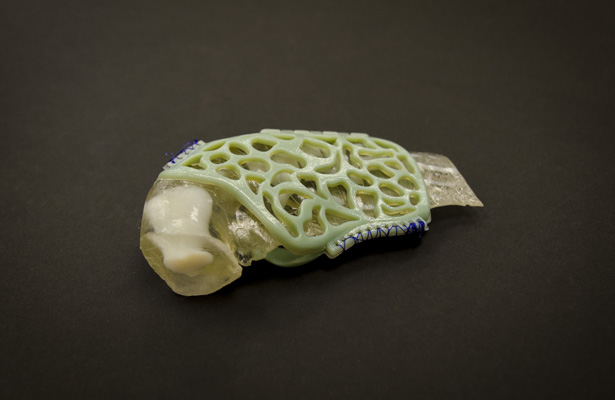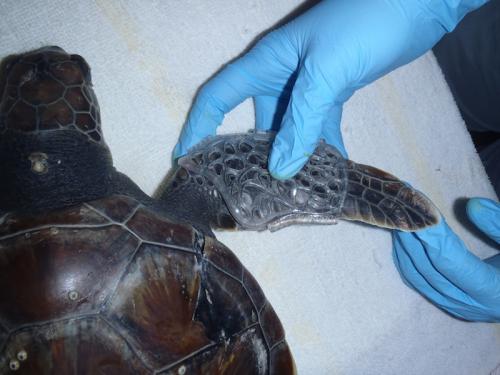In North Carolina, it is commonplace to see injured sea turtles with damaged flippers. For sea turtles out in the wild, recovery for flipper injuries takes a long time. Although these creatures have the ability to self-heal, even when fully recovered, they may not be able to adequately move. With customized 3D-printed assistive flipper splints, turtles can recover faster and have a better chance of swimming for survival.
Augie is an endangered green sea turtle who was found last summer with a front flipper cut with bone fragments sticking out. Veterinarian Craig Harms and zoological medical resident Emily Christiansen realized that the flipper’s tissue would eventually heal. To ensure that Augie would be able to swim again, the doctors knew that the flipper needed a splint that would encourage the bones to grow together properly.
Harms and Christiansen asked NC State veterinary colleague and orthopedic specialist Denis Marcellin-Little to assist with this program. Marcellin-Little partners with the College of Engineering Laboratory for Additive Manufacturing and Logistics (LAML), to create customized prosthetic implants for animals. He regularly performs limb and joint replacements on cats and dogs.
Firstly, the team performed a CT scan on Augie’s wounded flipper. The scan was made into a model to be used by the engineers at LAML to create a lightweight splint for the turtle. LAML usually produces 3D-printed prosthetics from metals, but the turtle required a lighter form that reinforced bone growth. Augie’s splint was crafted using the ClayTools modeling system from a rubber/plastic material with extra padding for additional comfort. LAML used an Objet Connex 350 printer to finally produce the splint. 
Augie is recovering beautifully after sporting the splint for 40 days, and will soon be released into the wild.
Story via LAML
Advertisement
Learn more about Electronic Products Magazine





